Top 10 Most Popular & Famous Tourist Attractions In Germany
 |
| Top 10 Most Famous Tourist Attractions In Germany |
Germany is a Western European country with a landscape of forests, rivers, mountain ranges, and North Sea beaches. It has over 2 millennia of history. Berlin, its capital, is home to art and nightlife scenes, the Brandenburg Gate, and many sites relating to WWII. Munich is known for its Oktoberfest and beer halls, including the 16th-century Hofbräuhaus. Frankfurt, with its skyscrapers, houses the European Central Bank.
The top 100 destinations in Germany survey, created by the German National Tourist Board, lists the most popular attractions for each year that are visited by foreign tourists. In 2021, more than 14.000 international visitors took part in the vote, which ran from January to July 2021. Here are the first 10 most popular places that attract many tourists every year.
List of top 10 most famous tourist attractions in Germany
10. Kriminalmuseum Rothenburg ob der Tauber, Bavaria
9. Black Forest National Park, Baden-Württemberg
8. Berlin
7. Dresden, Saxony
6. Romantische Straße, Bavaria & Baden-Württemberg
5. Rothenburg ob der Tauber, Bavaria
4. Phantasialand Brühl, North Rhine-Westphalia
3. Schloss Neuschwanstein, Schwangau, Bavaria
2. Europa-Park, Rust, Baden-Württemberg
1. Miniatur Wunderland, Hamburg
*****
What are the most popular tourist attractions in Germany?
10. Kriminalmuseum Rothenburg ob der Tauber, Bavaria
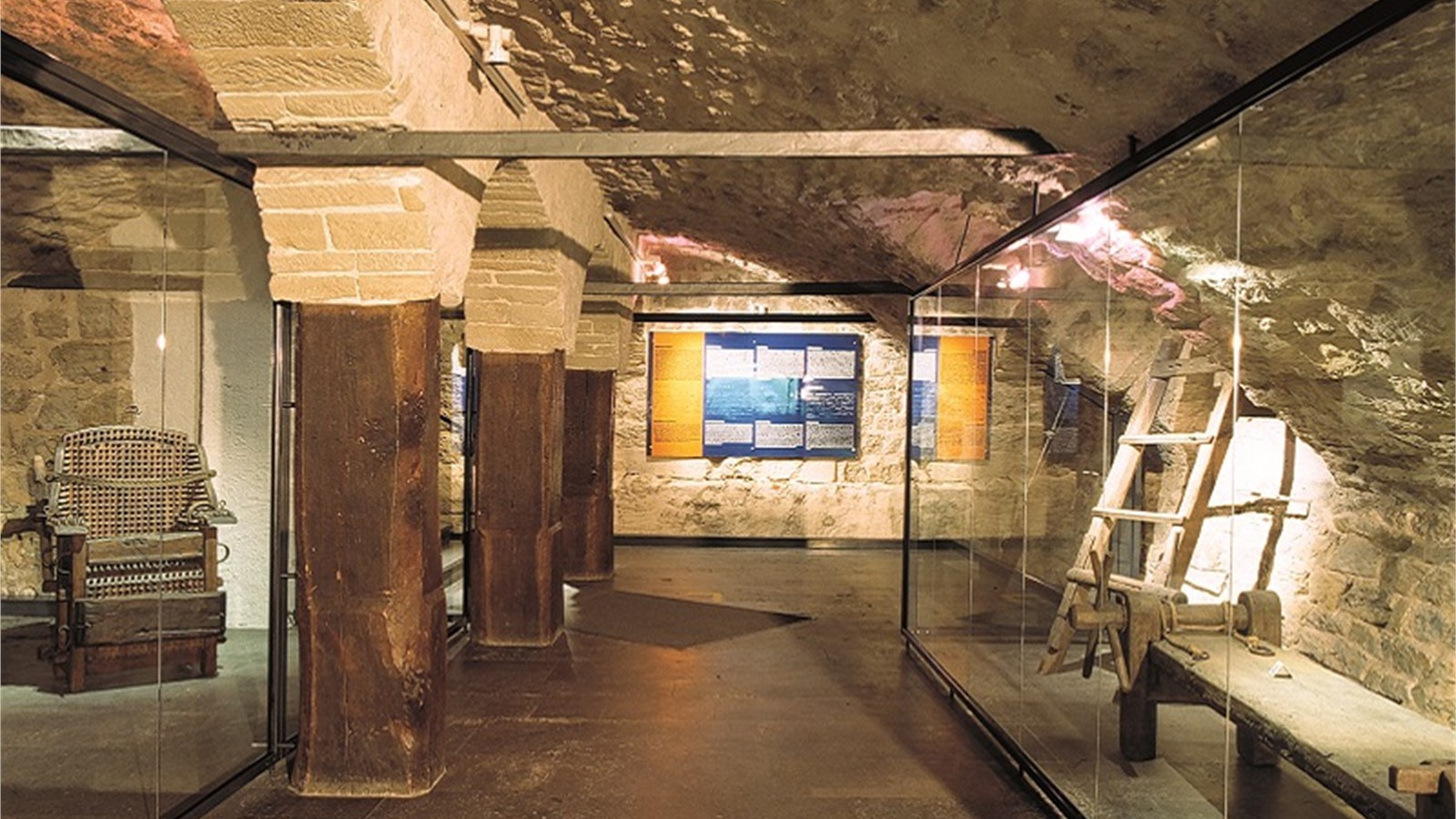 |
| Photo: Filmlocations Bayern |
In Medieval Europe, sharing a juicy piece of gossip could earn the speaker a punishment of wearing a humiliation mask, created just for this crime. A similar fate awaited men who told lascivious jokes, and those who interfered in other people’s business.
A physical equivalent of social media shaming several centuries before Facebook and Twitter, the masks were fashioned out of iron and had exaggerated features representing each specific social misconduct. The “gossip” mask has long ears and glasses, to hear and see and everything, and an even longer tongue to show that the wearer was likely to spread the information quickly and indiscreetly.
From social shaming tools to more physically torturous devices, the museum chronicles the brutal history of over 1,000 years of crime and punishment in Germany and other parts of Europe. The painful private collection curated by a German publisher in the late-19th century was first housed, quite appropriately, in the tower of a castle hotel, and it took on the shape of a more expansive museum under the guidance of an artist couple. It moved into its current location, a former administrative building, in 1977 and displays over 50,000 objects relating to law and order as it was enforced and structured in the medieval era and thereafter.
During those grim times, professional misdemeanors, too, were not excused. For baking bread loaves that were too small or light, bakers were locked into a cage and dunked repeatedly into the water and off-key musicians were spotlighted with a shame flute fastened around their necks.
An entire section is dedicated to the treatment of women, and to the terrible witch-hunt which took place in the Bavarian region in the 17th century. The beauty of the delicate carvings on a choke pear, a device with petal-like divisions, is swiftly overshadowed by its terrifying purpose—it was inserted into orifices of the human body, particularly for women, and slowly turned so that each leaf expanded, causing immense pressure, and the victim quickly admitted to his or her crime. More torture devices cruelly designed to extract confessions, true or false, from suspected criminals line the walls of this museum, according to Atlas Obscura.
9. Black Forest National Park, Baden-Württemberg
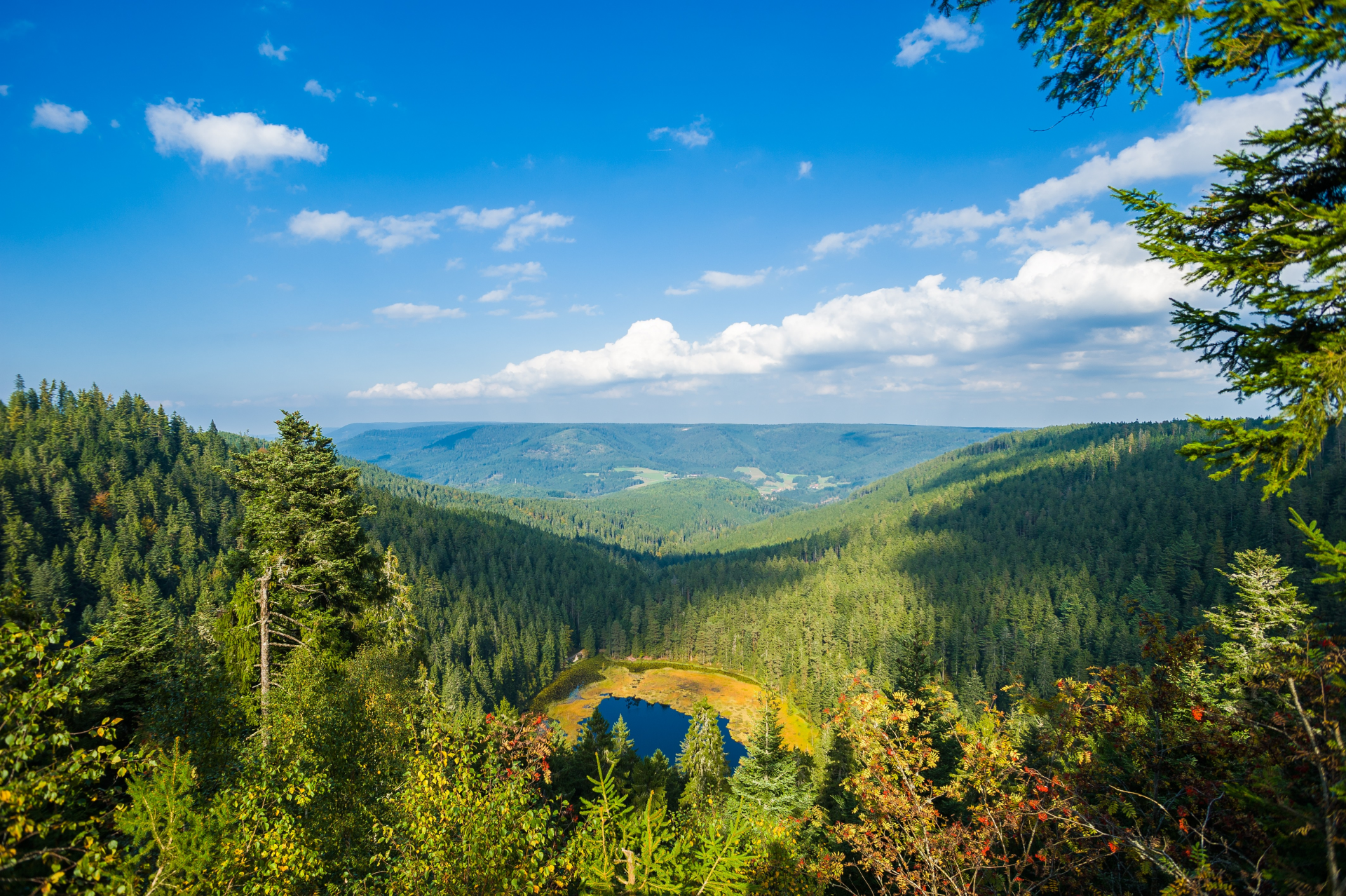 |
| Photo: Arrival Guides |
The Black Forest National Park (German: Nationalpark Schwarzwald) is a national park in the state of Baden-Württemberg in the southwest of Germany.
It has an area of 10,062 hectares (100.62 km2; 38.85 sq mi) and is located on the main crest of the Northern Black Forest, mainly between the Black Forest High Road (Schwarzwaldhochstraße) and the valley of the Murg. It comprises two separate areas, roughly 3.5 kilometres apart, around Ruhestein (7,615 ha) and Hoher Ochsenkopf/Plättig (2,447 ha) and is part of the Central/North Black Forest Nature Park (Naturpark Schwarzwald Mitte/Nord). The park was officially opened on 3 May 2014.
The Black Forest National Park was created on 1 January 2014 and is the first national park in Baden-Württemberg, Germany. The state parliament voted for its establishment on 28 November 2013.
The establishment of the first national park in the Black Forest was politically controversial. In 2013, it was opposed by Baden-Württemberg's opposition parties (CDU and FDP), by representatives of the timber industry, and by some of the affected population, whilst being supported by the SPD and Greens, the conservation associations, and other parts of the populations of the Northern Black Forest.
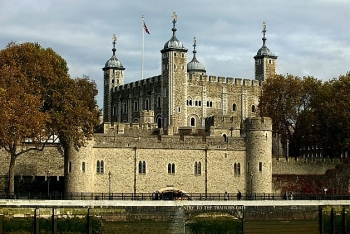 Top 10 Most Haunted and Ghost Destinations in Europe Top 10 Most Haunted and Ghost Destinations in Europe Who doesn't enjoy a good scare now and then? Now you can include this into your vacation by visiting some of Europe's scariest locations. |
8. Berlin
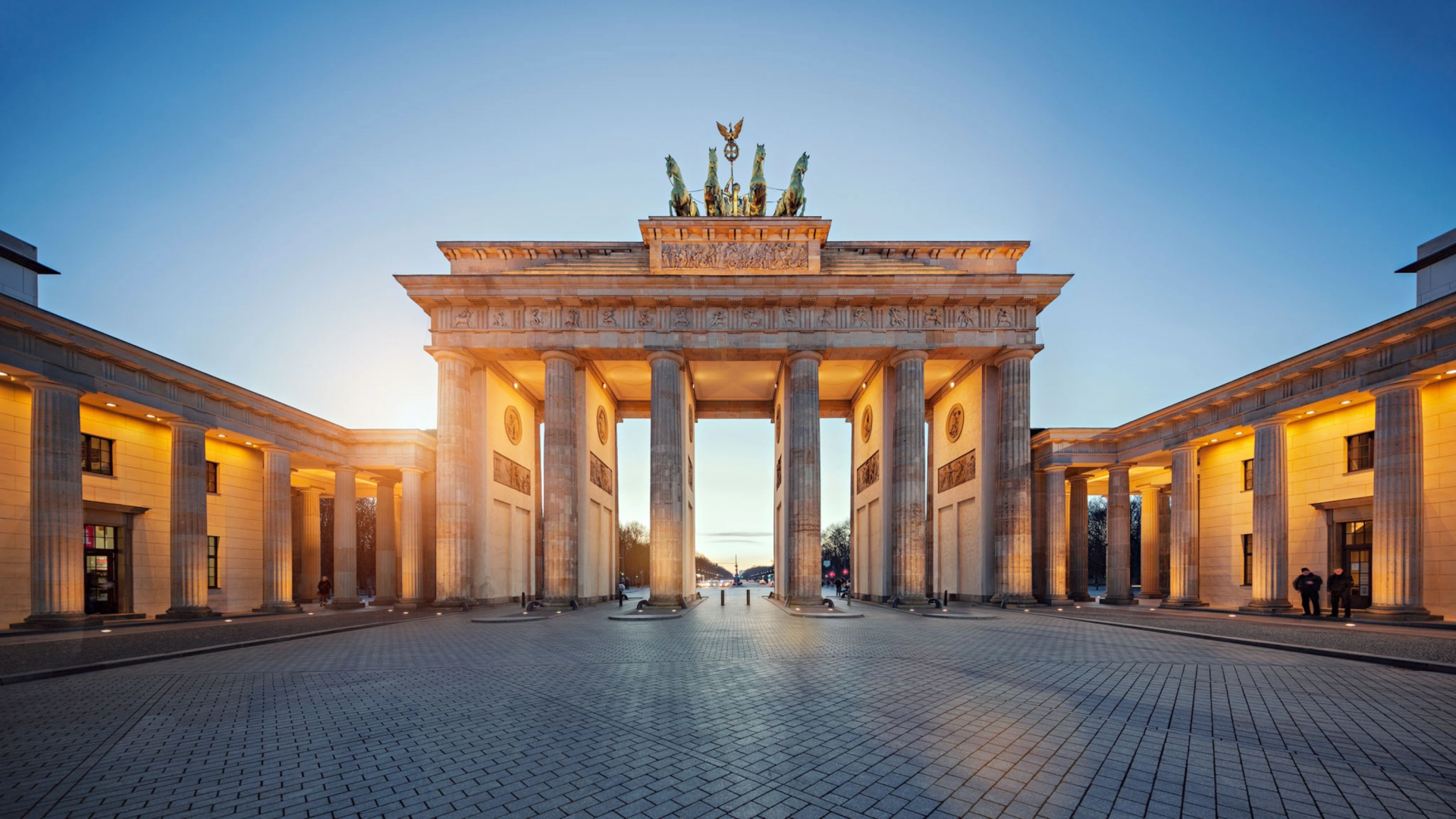 |
| Photo: National Geography |
England takes pleasure in London, the U.S. loves New York, France is slightly narcissistic about Paris and, following suit, Germany proudly claims Berlin. More than two decades since the fall of the Berlin Wall, the city basks in a cultural renaissance that boasts everything from museums and fashion to food and nightclubs. But that's not to say that this city has forgotten its dark past; in fact, attractions like The Memorial to the Murdered Jews of Europe, the Topography of Terror and the Checkpoint Charlie Museum are evidence of its steadfast reverence. And yet, Berlin is on the upswing. An afternoon of people-watching at a lively cafe or an all-night dance fest at a hip club will provide you with the proof.
The best time to visit Berlin is May through September, when the weather is ideal for cafe sitting, park lazing and leisurely city strolling. Winter, on the other hand, is freezing: Temperatures tend to range from 20 to 30 degrees Fahrenheit. However, this might be the best time for budget travelers to score deals on airfare and hotel rates, according to U.S News.
7. Dresden, Saxony
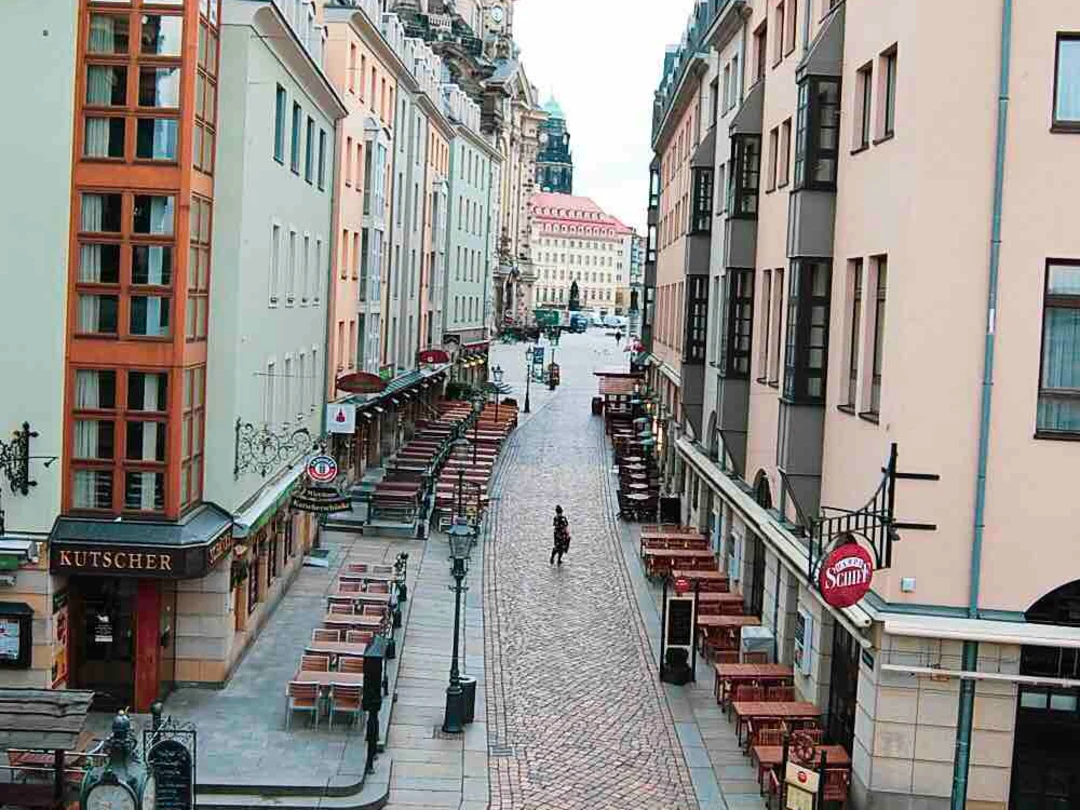 |
| Photo: Hero Traveler |
Dresden is the capital city of the German state of Saxony and its second-most populous city, after Leipzig. It is the 12th most populous city of Germany, the fourth-largest by area (after Berlin, Hamburg, and Cologne), and the third most populous city in the area of former East Germany, after Berlin and Leipzig. Dresden's urban area comprises the towns of Freital, Pirna, Radebeul, Meißen (Meissen), Coswig, Radeberg and Heidenau and has around 790,000 inhabitants. The Dresden metropolitan area has approximately 1.34 million inhabitants.
Dresden is the second-largest city on the River Elbe after Hamburg. Most of the city's population lives in the Elbe Valley, but a large, albeit very sparsely populated area of the city east of the Elbe lies in the West Lusatian Hill Country and Uplands (the westernmost part of the Sudetes) and thus in Lusatia, while many boroughs west of the Elbe lie in the foreland of the Ore Mountains as well as in the valleys of the rivers rising there and flowing through Dresden, the longest of which is the Weißeritz and the Lockwitzbach. The name of the city as well as the names of most of its boroughs and rivers are of Slavic origin.
Dresden has a long history as the capital and royal residence for the Electors and Kings of Saxony, who for centuries furnished the city with cultural and artistic splendor, and was once by personal union the family seat of Polish monarchs. The city was known as the Jewel Box, because of its baroque and rococo city centre. The controversial American and British bombing of Dresden in World War II towards the end of the war killed approximately 25,000 people, many of whom were civilians, and destroyed the entire city centre. After the war, restoration work has helped to reconstruct parts of the historic inner city.
6. Romantische Straße, Bavaria & Baden-Württemberg
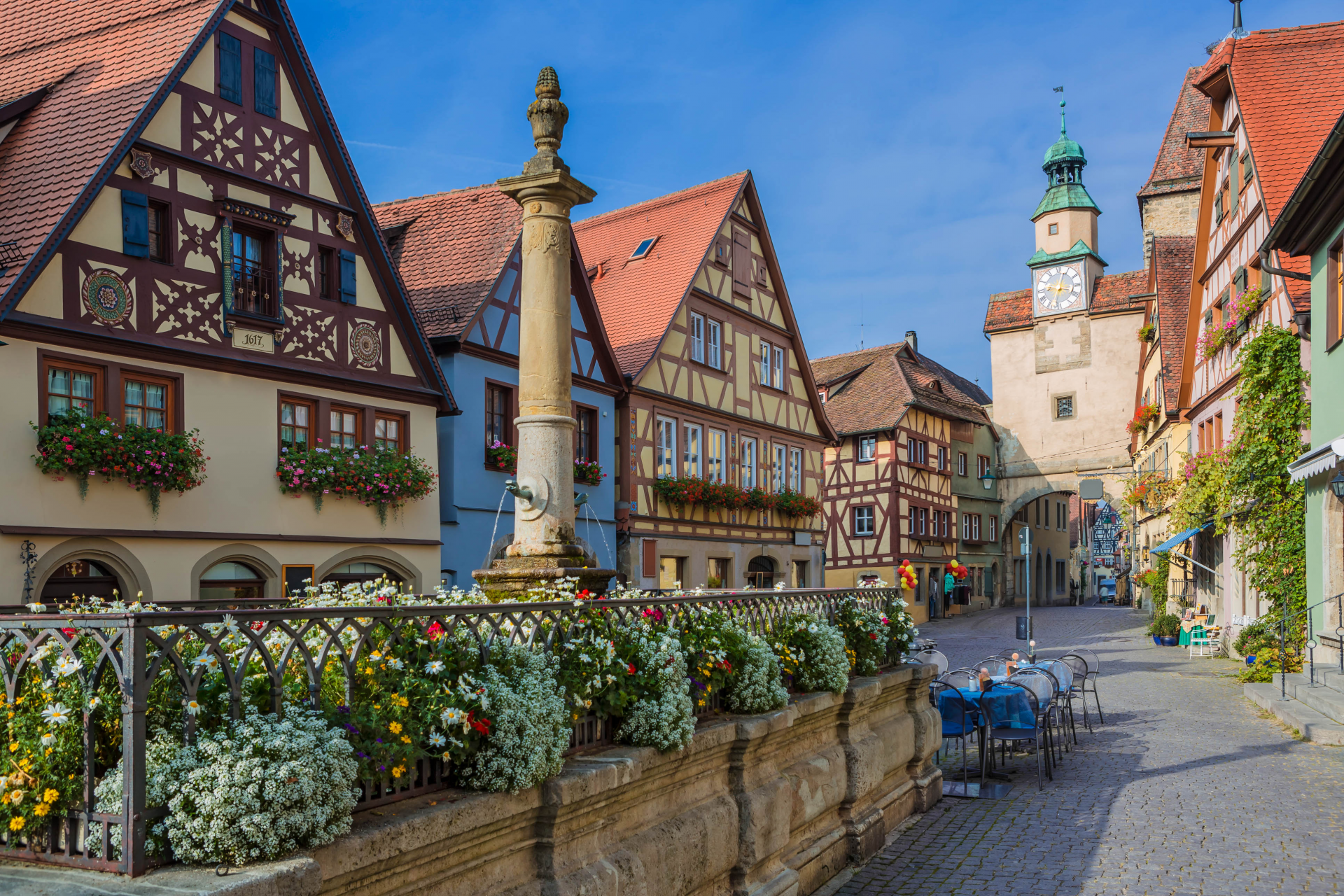 |
| Photo: Urlaubsguru |
The Romantic Road, known in German as the Romantische Straße, is a "theme route" devised by promotion-minded travel agents in the 1950s.
It describes the 350 kilometers (220 miles) of highway between Würzburg and Füssen in southern Germany, specifically in Bavaria and Baden-Württemberg, linking a number of picturesque towns and castles. In medieval times it was a trade route that connected the center of Germany with the south. Today this region is thought by many international travelers to possess "quintessentially German" scenery and culture, in towns and cities such as Nördlingen, Dinkelsbühl and Rothenburg ob der Tauber and in castles such as Burg Harburg and the famous Neuschwanstein. The Romantic Road is marked along the way with brown signs. This is an automatic compilation of DW content pertaining to "Romantic Road".
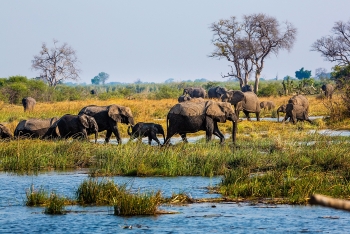 25 Best Destinations in the World To Visit in 2022 25 Best Destinations in the World To Visit in 2022 Chec out The Full List Of The Best Destinations in the World for 2022 With Top 25: Nature, Adventure, Sustainability, Culture and History, according to ... |
5. Rothenburg ob der Tauber, Bavaria
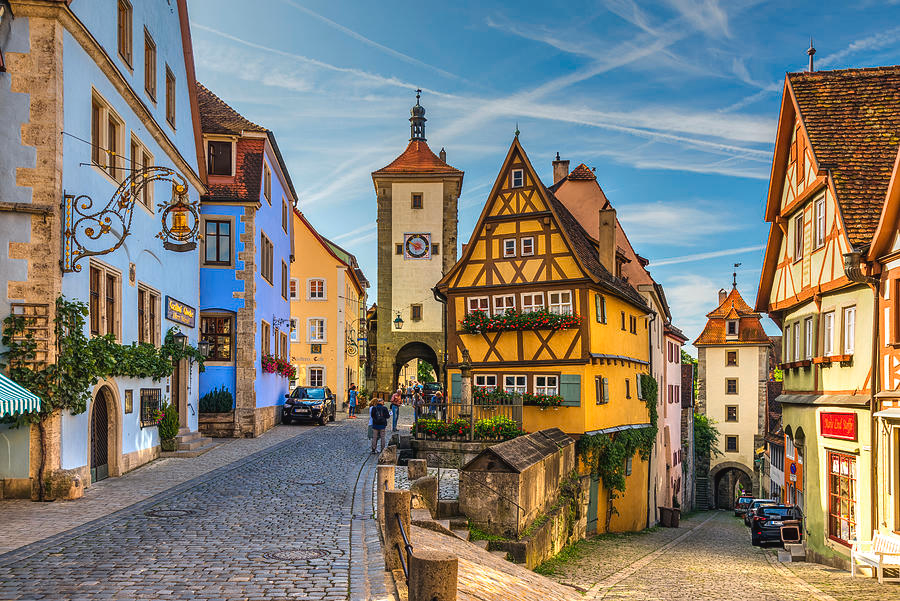 |
| Photo: Fine Art America |
Rothenburg ob der Tauber is one of the oldest and most historic of the medieval towns along the Romantic Road.
Although there had been settlements in the area and in the neighboring Tauber valley for many centuries before, the official history of Rothenburg is generally thought to date from the 10th century with the construction of a castle in an easily-defensible position above the River Tauber.
The original line of rulers died out and so the castle and neighboring town came into the hands of the Hohenstaufen Emperors of Germany, who granted it an official town charter in the 12th century.
The town walls and many of the buildings which still exist were constructed during the next century (in fact, rapid expansion meant that a new outer wall had to be constructed within 30 years of the former city walls being finished) and the town was granted the position of a Free Imperial City.
Despite these fortifications (or perhaps they are a sign of the times) Rothenburg has a tortuous history of wars and alliances, ranging from involvement in wars between the counts and princes, followed by enthusiastic participation in the Peasants' War (which led to mass executions in the market place).
The subsequent Thirty Years' War gave the legend of the "Meistertrunk" to Rothenburg - the town mayor is supposed to have quaffed a massive tankard of local wine as part of a bet to save the Protestant town from pillaging by Catholic forces. In fact, the town was forced to pay a massive amount of money and goods as a bribe to pay off the opposing forces after pleas from the children and womenfolk of the town.
A play was developed around the legendary events towards the end of the 19th century - the town had long since become part of Bavaria - which helped to market the town's medieval charms and led to the interest in the history and appearance of Rothenburg on an international level and to restrictive laws being introduced to control changes to the "look" of the historic centre.
This was part of the reason for the relative preservation of the town from the destruction experienced by many other places in the Second World War. Although the town was bombed from the air, ground commanders on both sides hesitated to attack or defend with full force as the war came to an end, according to Romantic Road.
4. Phantasialand Brühl, North Rhine-Westphalia
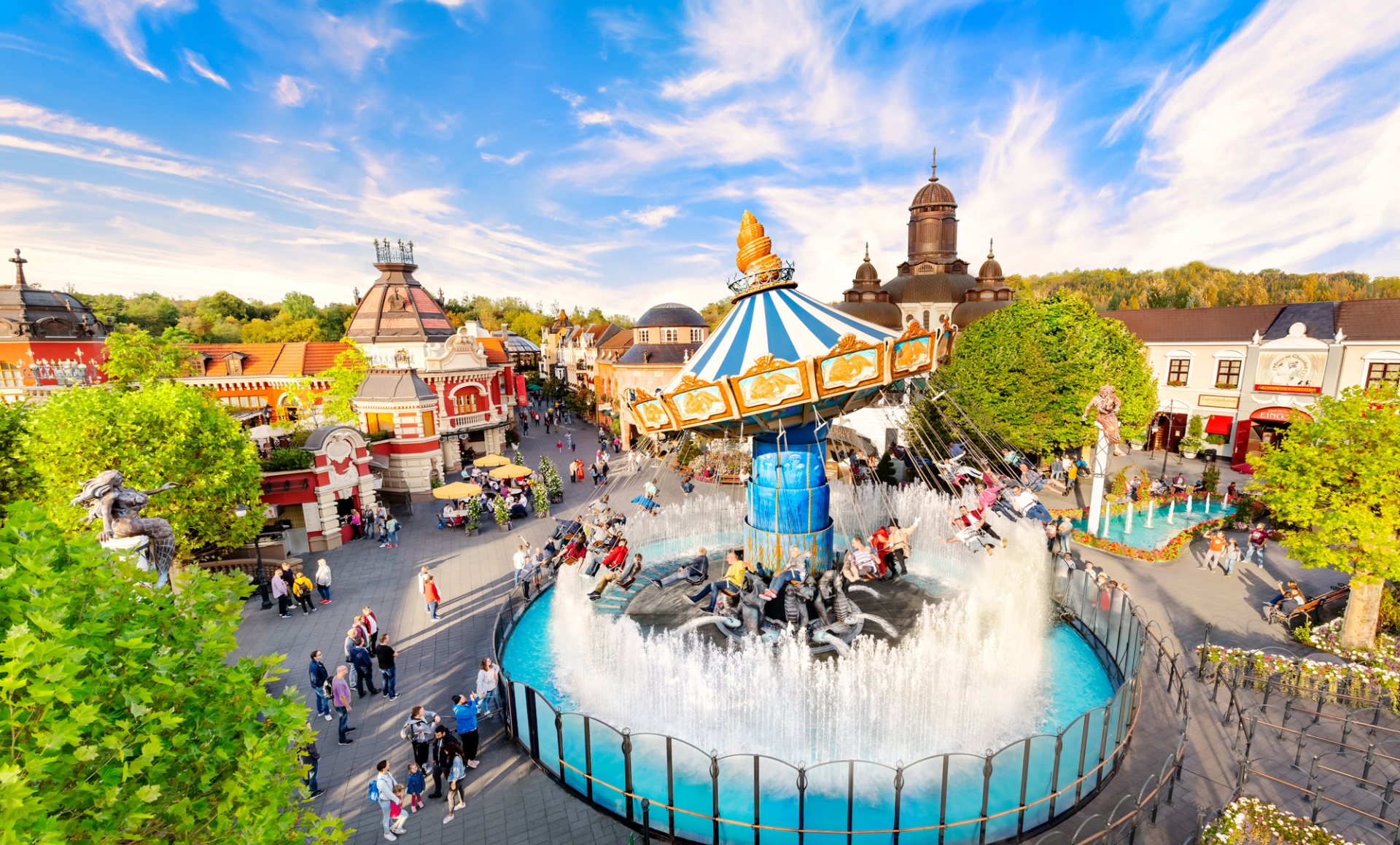 |
| Photo: Wikipedia |
Phantasialand is a theme park in Brühl, North Rhine-Westphalia, Germany that attracts approximately 2 million visitors annually. The park was opened in 1967 by Gottlieb Löffelhardt and Richard Schmidt. Although starting as a family-oriented park, Phantasialand has also added thrill rides, especially during recent years. Furthermore, following the example of Europa-Park, they have decided to attract business customers beside the regular ones, calling it "Business to Pleasure".
Phantasialand is known for its high attention to detail in its theming and introduces new attractions more often compared to other theme parks to compensate for its small area and regularly is voted one of the best parks in the world.
Among the park's thrill rides are Taron (the world's fastest multi-launch coaster), Black Mamba (a Bolliger & Mabillard inverted coaster), and a themed Mine Train roller coaster called Colorado Adventure, which runs among some mountains in the park's Wild West section and was opened by Michael Jackson.
3. Schloss Neuschwanstein, Schwangau, Bavaria
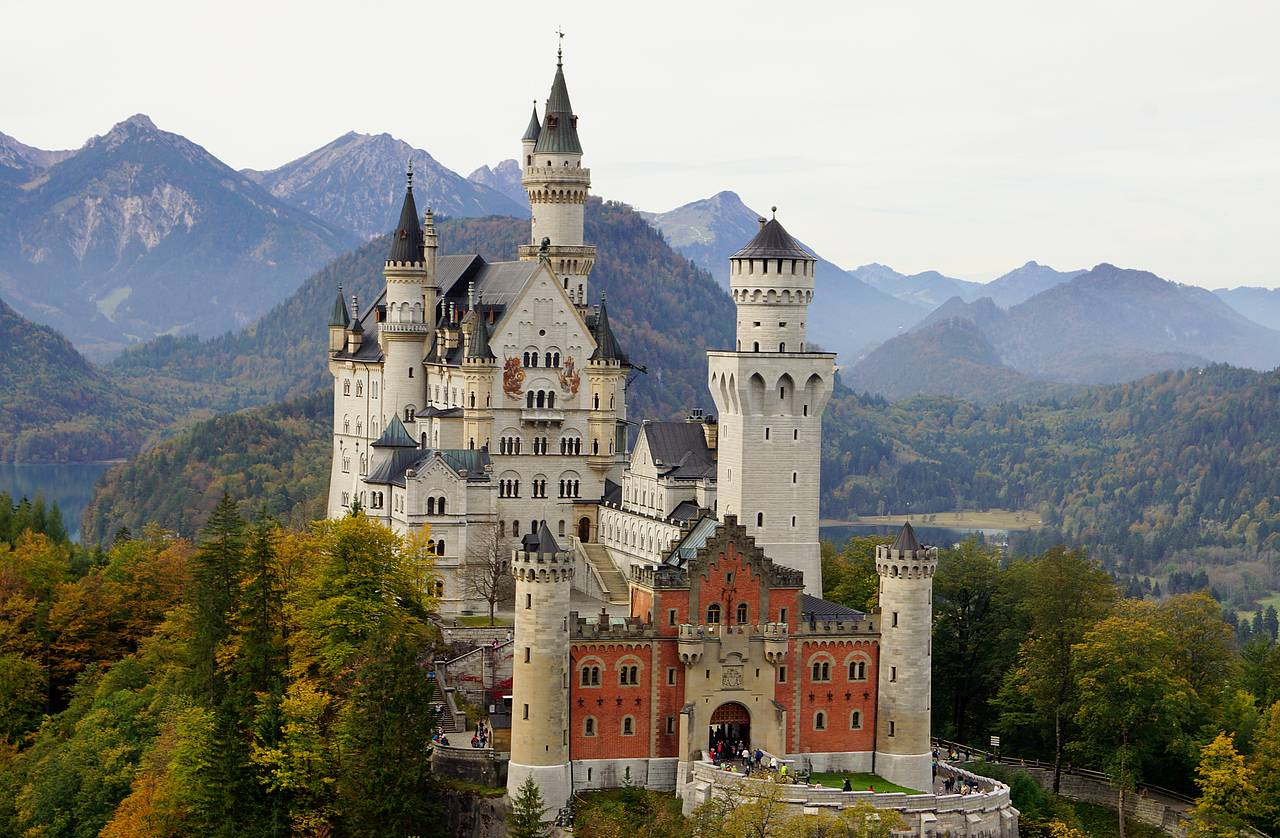 |
| Photo: Schwangau.de |
The castle was built in 1869 and partially completed in 1886 when King Ludwig II mysteriously died in Lake Starnberg. Since then, it is opened to all visitors around the world and earmarked as the Landmark of Germany, one of the most popular tourist attractions in Germany.
The name Neuschwanstein appears for the first time in a document from 1397. However today's Hohenschwangau was built at this time below the present-day Neuschwanstein Castle in the district of Hohenschwangau.
The Crown Prince and later King Ludwig II spent his childhood in Hohenschwangau Castle. Through many hikes and walks around the ruins of the front and of the back Hohenschwangau, he discovered the later site for his first castle. In 1869 construction commenced of the Neuschwanstein Castles.
The castle was built of stone construction and with other types of rock. The white limestone facade surfaces came from the nearby quarry, Alter Schrofen, from the district of Schwangau Alterschrofen.
When King Ludwig II died on 13th June 1886, the Neuschwanstein Castle had not yet been completed and the construction work continued until 1892.
Just six weeks after the death of King Ludwig II the castle opened again for visitors. In the first eight weeks, around 18.000 people visited the castle. Today the castle attracts some 1.5 million visitors a year.
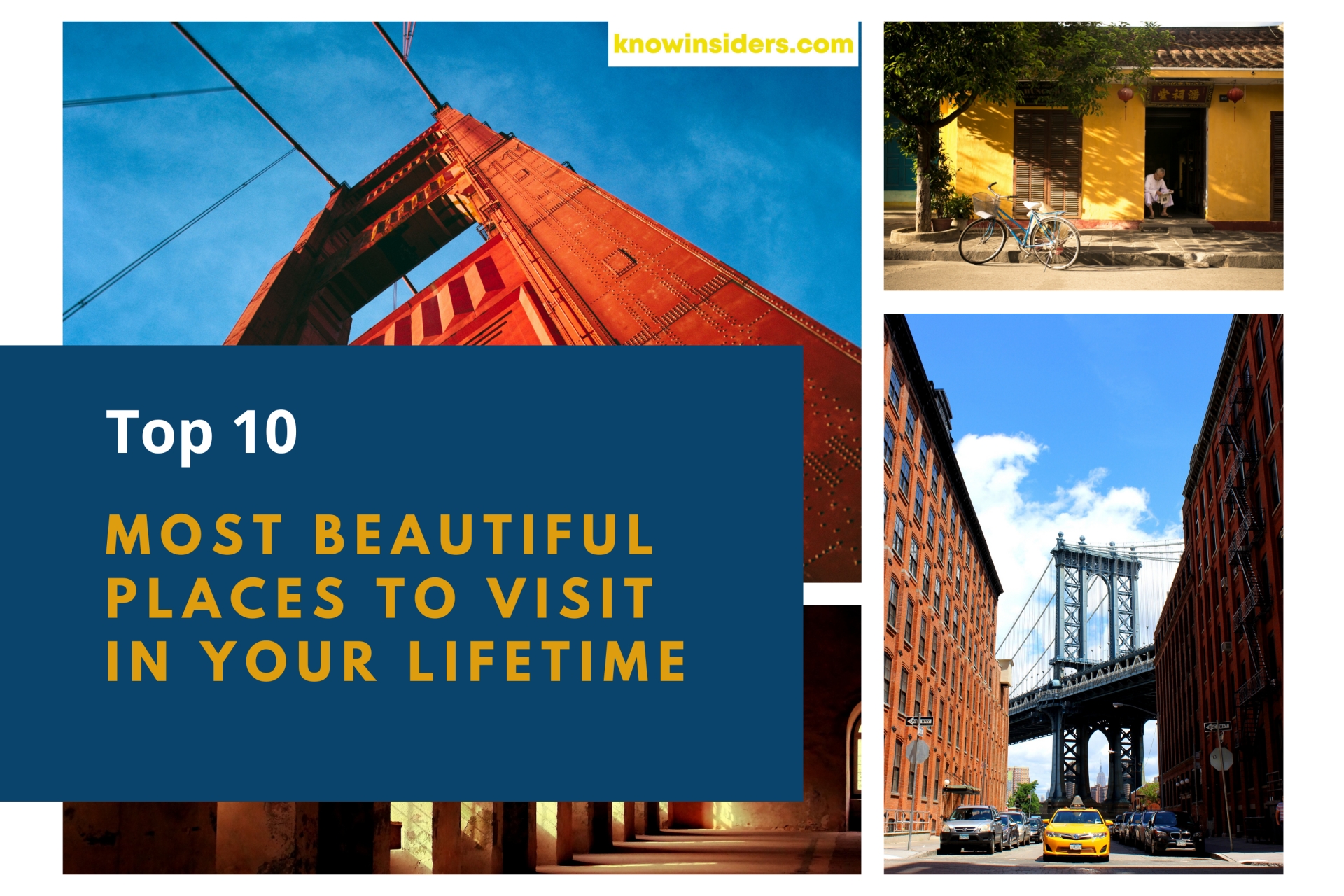 Top 10 Most Beautiful Places In The World To Visit In Your Lifetime Top 10 Most Beautiful Places In The World To Visit In Your Lifetime There are amazing places in the world that you should visit once in your life. Where are they? Let’s plan a trip. |
2. Europa-Park, Rust, Baden-Württemberg
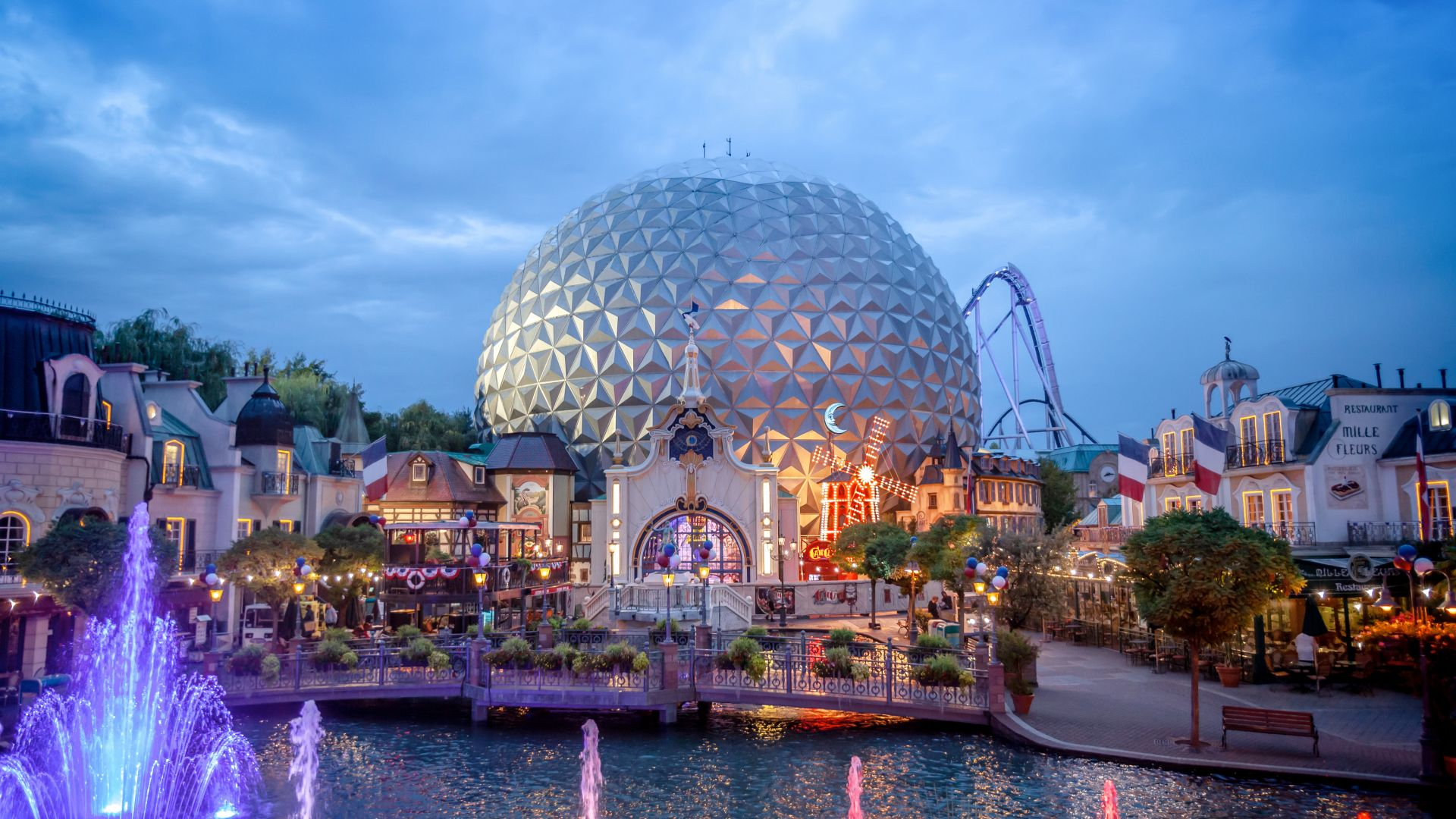 |
| Photo: Germany Travel |
Europa-Park is the largest theme park in Germany, and the second most popular theme park in Europe, after Disneyland Paris. Europa-Park is located in Rust, south-western Germany, between Freiburg im Breisgau and Strasbourg (in neighboring France).
The park is home to 13 roller coasters, the oldest, which opened in 1984, is the Alpenexpress Enzian, which is a powered coaster that speeds through a diamond mine. Europa-Park has very high capacity roller coasters and attractions, meaning the park can accommodate approximately 60,000 guests per day. The park counted 5.75 million visitors in 2019. It is also the location of the Euro Dance Festival.
The resort (park, parking lot, hotels, and backstages) occupies roughly 95 hectares. It hosts six hotels, one campground, and one movie theater.
In November 2019, Europa-Park's "Rulantica" water park opened, along with the Museum-Themed Hotel, "Krønasår".
Europa-Park provides paper maps at the main entrance and hotel resort entrance, available in 3 languages (German, French, and English) with traffic light coding for the day's expected visitor numbers (Green for quiet, Orange for moderate, and Red for busy) and times for attractions including shows. These paper maps differentiate between the main season and winter season, depending on which attractions are available. There are also giant maps available park-wide showing your current location and an e-map available on the Europa-Park app.
There are queue time boards park-wide, which are also shown in 3 languages (German, French, and English), and on the Europa-Park app. There are also individual queue time boards available at most attractions. Showtimes are also available on the queue time boards, on the Europa-Park app, and in front of the show venue.
Europa-Park is relatively easy to navigate on the ground and takes roughly 20 minutes to traverse from the furthest side (such as Deutsche Allee) to the other (Spain). The pathways are typically flat and wide with a few inclines around quarters such as Scandinavia and Austria, as well as cobbles in Spain and Switzerland, making most of the park accessible to guests with mobility issues and families with young guests.
1. Miniatur Wunderland, Hamburg
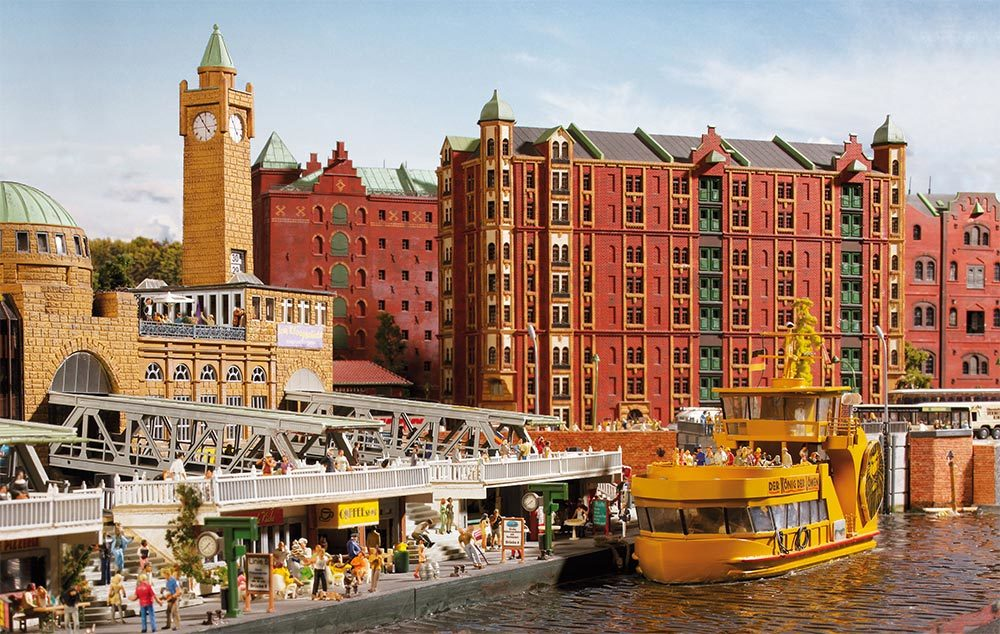 |
| Photo: Miniatur Wunderland |
Miniatur Wunderland (German for 'miniature wonderland') is a model railway and miniature airport attraction in Hamburg, Germany, the largest of its kind in the world. The railway is located in the historic Speicherstadt neighborhood of the city.
In October 2016 the railway consisted of 15,715 m (51,558 ft) of track in H0 scale, divided into nine sections: Harz mountains, the fictitious town of Knuffingen, the Alps and Austria, Hamburg, America, Scandinavia, Switzerland, a replica of Hamburg Airport and Italy. Of the 7,000 m2 (75,347 sq ft) of floor space, the model occupies 1,499 m2 (16,135 sq ft).
The exhibit includes 1,300 trains made up of over 10,000 carriages, over 100,000 moving vehicles, approx. 500,000 lights, 130,000 trees, and 400,000 human figurines. Planning is also in progress for the construction of sections for Central America and the Caribbean, Asia, England, Africa, and The Netherlands.
After construction began in December 2000, the first three sections (Knuffingen, Central Germany, and Austria) opened on August 16, 2001. Since then, new sections have been added. With the completion of the Hamburg, German Coast section in November 2002, Wunderland became the largest model railroad in Europe. Expansions in December 2003 with the USA and with Scandinavia in July 2005 followed. On September 10, 2015, Gerrit and Frederik Braun added the missing piece of track between the Switzerland section and a new Italy section. In doing so, they extended the track length from 13,000 to 15,400 meters. This was recorded by a Guinness judge, who then presented the certificate for the newly established world record. The 190 sq m Bella Italia section was opened on 28 September 2016 after four years under construction, involving 180,000 man-hours and costing around four million euros. Work on the Monaco / Provence section started in August 2019 and, when completed, will mean the addition of another 315 meters. The total length of currently 15,715 meters, therefore, corresponds to 1,367.21 km in real length, so this is now also the largest model railway layout in the world across all scales.
 Top 10 Most Popular Wines in the UK Top 10 Most Popular Wines in the UK Wine is one of the most popular drinks in the United Kingdom and has largely been consumed by a large number of people. |
 Top 10 Most Expensive And Famous Guitars In The World Top 10 Most Expensive And Famous Guitars In The World What are the most famous and expensive guitars in the world? How much is the most expensive guitar in the world? Let's explore! |
 Top 10 Largest Private Companies in The United States Top 10 Largest Private Companies in The United States Check out this article to know what are the 10 largest private companies in America based on its revenues in the most recent fiscal year. |
 Top 10 Most Beautiful Castles In Scotland Top 10 Most Beautiful Castles In Scotland Scotland is home to amazing castles. Let's explore the land of castles with Top 10 Most Beautiful Castles In Scotland. |


























